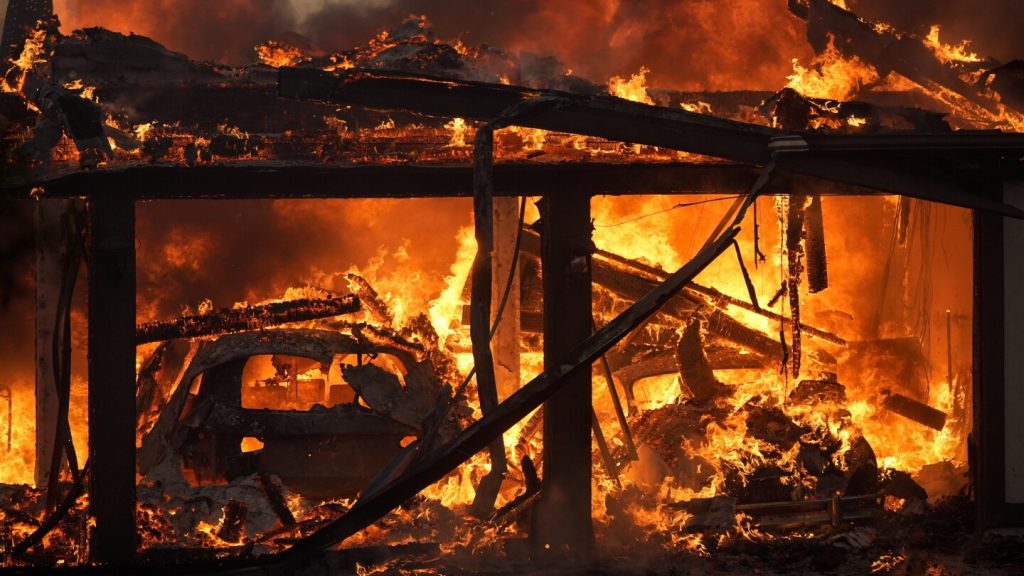As wildfires continue to ravage landscapes around the world, particularly in fire-prone areas like Southern California, residents are faced with difficult decisions of what to save when fleeing their homes. The Mountain Fire in Ventura County, California recently destroyed numerous homes, leading residents to prioritize saving cats, dogs, horses, family photos, mementos, and a single bag of clothing. With the added fuel of human-caused climate change, wildfires are becoming more frequent and destructive, especially in areas with strong winds that fan the flames. The impact of wildfires on lives, livelihoods, and ecosystems is described as truly devastating by Alex Hall, the director of UCLA’s Center for Climate Science.
The power of wildfires is evident in the scenes of destruction that unfold as flames engulf homes and landscapes. Firefighters and first responders work tirelessly to contain the blazes, often risking their own lives in the process. Residents must make split-second decisions about what to take with them as they evacuate, knowing that the flames show no mercy. Lucky individuals escape with their lives and a few cherished possessions, while others are left to sift through the ashes of their homes, searching for remnants of their former lives. Sometimes, amidst the destruction, unexpected treasures are uncovered, providing glimmers of hope in the midst of tragedy.
Despite the fierce battles against wildfires, the flames continue to rage, leaving behind a trail of devastation in their wake. Entire neighborhoods are reduced to rubble, with only charred remains of what once stood as homes. The heartbreaking sight of burned vehicles, scorched earth, and skeletal structures serves as a stark reminder of the destructive force of nature. Families and individuals are left to grieve the loss of their homes and belongings, facing the daunting task of rebuilding their lives from the ashes.
For some residents, the aftermath of a wildfire involves confronting the reality of starting anew, as they survey the damage and assess their losses. The process of rebuilding can be overwhelming, both emotionally and financially, as they come to terms with the destruction wrought by the flames. Community solidarity and support play a crucial role in helping those affected by wildfires to recover and rebuild, offering a glimmer of hope in the midst of despair. While the road to recovery may be long and arduous, the resilience and determination of individuals and communities shine through as they band together to overcome adversity.
The impact of wildfires extends beyond the physical destruction of homes and landscapes, leaving lasting scars on the environment, wildlife, and ecosystems. The loss of vegetation, habitats, and biodiversity can have far-reaching consequences, affecting the delicate balance of nature in fire-prone regions. Climate change exacerbates the frequency and intensity of wildfires, posing a significant threat to the environment and wildlife that call these areas home. Efforts to mitigate the effects of wildfires and address the underlying causes of climate change are crucial in safeguarding the future of these vulnerable landscapes and species.
As communities grapple with the aftermath of wildfires, the need for proactive measures to prevent and mitigate future disasters becomes increasingly urgent. From enhancing firefighting capabilities to implementing sustainable land management practices, various strategies can help reduce the risk of wildfires and protect lives, homes, and ecosystems. Collaboration between government agencies, communities, and conservation organizations is essential in developing comprehensive approaches to wildfire prevention and response. By working together to address the root causes of wildfires and build resilience in fire-prone areas, we can strive towards a future where communities are better prepared to face the challenges of a changing climate.















